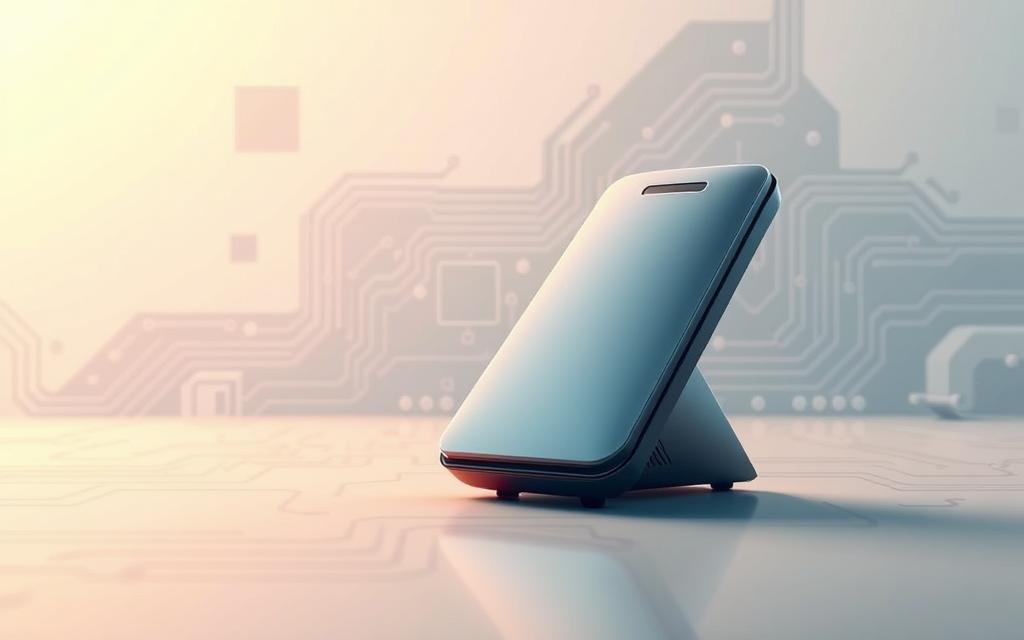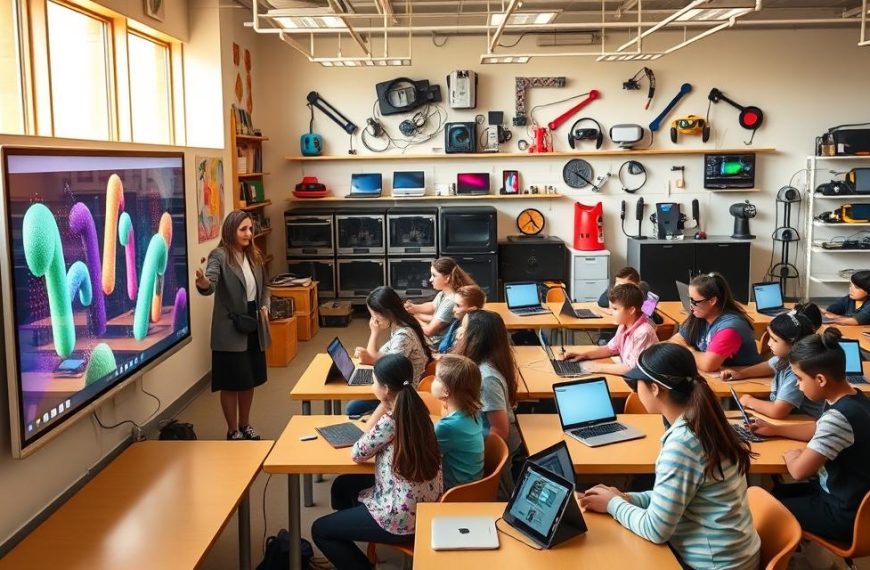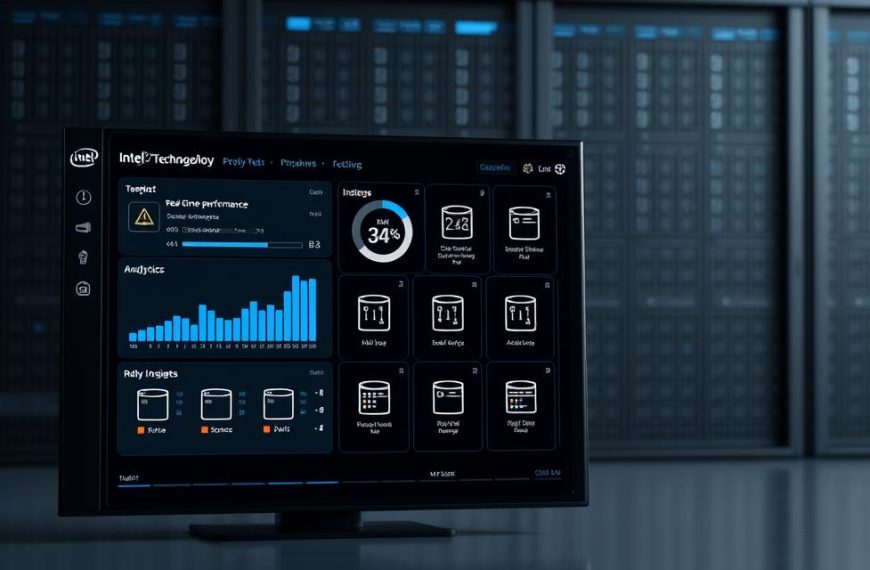Digital Enhanced Cordless Telecommunications (DECT) is a wireless standard commonly used for landline phones, providing a significant boost to wireless communication.
It is a radio frequency technology that enables secure and reliable communication for various devices, including cordless phones and wireless headsets, typically operating within a range of 300-600 feet.
The introduction of DECT has revolutionised cordless telecommunications, offering a robust and interference-free connection, much like WiFi does for the internet.
Understanding DECT 6.0 Digital Technology
With its robust security and high-quality voice transmission, DECT6.0 is setting a new benchmark in digital communication. This technology has been designed to provide a range of benefits that enhance the user experience.
Definition and Basic Concept
DECT6.0 is a digital cordless technology standard that operates on a specific frequency band, offering a range of advanced features and capabilities. It is designed to provide superior voice quality and security compared to older cordless phone standards.
Key Features at a Glance
The key features of DECT6.0 technology include its impressive range capabilities, typically reaching up to 50 metres indoors and up to 300 metres outdoors. Other notable features include:
- Robust security features, including encryption protocols to protect against eavesdropping and unauthorised access.
- A dedicated frequency band that reduces interference from other wireless devices.
- Support for multiple handsets operating from a single base station.
- Energy-efficient design with features like ECO mode.
The versatility of DECT6.0 technology enables its application in various devices beyond cordless phones, including wireless headsets, baby monitors, and security systems. The following table summarises the key features and benefits of DECT6.0 technology:
| Feature | Benefit |
|---|---|
| Long Range | Up to 50m indoors and 300m outdoors |
| Superior Voice Quality | Clear audio transmission with minimal background noise |
| Robust Security | Encryption protocols protect against eavesdropping |
The Evolution of DECT Technology
Originating in Europe, DECT technology has become a global standard for cordless communication. Its evolution is marked by significant adaptations to suit various regional requirements.
From European Origins to Global Standard
DECT technology was initially developed in Europe, operating within the 1880-1900 MHz frequency band. As it gained popularity, it became a widely accepted standard for cordless phones globally. The technology’s ability to provide clear voice quality and its resistance to interference made it a preferred choice over other cordless phone technologies.
Development of DECT6.0 for the US Market
The development of DECT6.0 was a crucial step in adapting DECT technology for the US market. Key aspects of DECT6.0 include:
- Operation in the 1920-1930 MHz frequency band, as mandated by the FCC.
- Modifications to the physical layer to comply with US frequency allocation requirements.
- Maintenance of compatibility with the core DECT standard, ensuring similar functionality and performance.
- Introduction to the US market in the early 2000s, offering a superior alternative to older cordless phone technologies.
DECT6.0 quickly gained popularity due to its clear voice quality and reduced interference, becoming the dominant standard for cordless phones in North America.
How DECT 6.0 Technology Works
Understanding how DECT6.0 technology works requires a look into its underlying technical architecture. DECT6.0 is a sophisticated wireless communication standard that relies on advanced radio technology to provide high-quality transmission.
Frequency Spectrum and Radio Technology
The physical layer of DECT6.0 employs Cyclic Prefix Orthogonal Frequency Division Multiplexing (CP-OFDM), combined with Time Division Multiple Access (TDMA) and Frequency Division Multiple Access (FDMA) in a Time Division Duplex (TDD) communication manner. This complex system enables efficient use of the available radio spectrum.
Base Station and Handset Communication
In DECT6.0 systems, communication between the base station and handset is crucial. The base station manages multiple handsets, ensuring clear and uninterrupted communication. This is achieved through a highly efficient frame structure that allows for simultaneous transmission and reception.
Time Division Multiple Access (TDMA)
DECT6.0 technology utilises TDMA as a fundamental method for sharing the available radio spectrum. The DECT standard uses a frame structure consisting of 24 time slots, with 12 slots for base station transmission and 12 for handset transmission in a TDD arrangement. Each time slot lasts for 417 microseconds, and the complete frame cycle repeats every 10 milliseconds.
| Feature | Description |
|---|---|
| TDMA Frame Structure | 24 time slots |
| Transmission Slots | 12 for base station, 12 for handset |
| Time Slot Duration | 417 microseconds |
| Frame Cycle | 10 milliseconds |
This TDMA system, combined with dynamic channel selection, significantly enhances DECT6.0’s performance in environments with potential radio interference, ensuring robust and reliable communication.
Technical Specifications of DECT 6.0
The technical specifications of DECT6.0 technology are crucial for understanding its capabilities and limitations. DECT6.0 is a sophisticated wireless technology that operates on a specific frequency band and has distinct characteristics in terms of range and power consumption.
Frequency Band and Channel Allocation
DECT6.0 operates on the 1.9 GHz frequency band, which is specifically allocated for use in the United States. This frequency band is divided into multiple channels to minimize interference and ensure efficient communication. The allocation of channels is managed to prevent overlap and ensure that multiple devices can operate simultaneously without significant degradation in performance.
Range and Power Consumption
Range: DECT6.0 technology offers an impressive range, typically reaching up to 50 metres indoors and up to 300 metres outdoors under optimal conditions. The actual range can vary depending on environmental factors such as building materials and electromagnetic interference.
Power Consumption: DECT6.0 devices are designed to be energy-efficient, with features like ECO mode reducing power consumption by up to 60%. In ECO mode, the transmission power between the base station and handset is adjusted based on distance, minimizing unnecessary power usage. When a handset is in its charging cradle, many DECT6.0 systems switch to ECO Plus mode, stopping radio transmissions until a call is received, thereby reducing electromagnetic radiation by up to 80%.
Benefits of DECT 6.0 Over Other Wireless Technologies
One of the key advantages of DECT6.0 is its ability to provide superior performance compared to other wireless technologies. This is attributed to several factors that make DECT6.0 a preferred choice for users seeking reliable and high-quality wireless communication.
Superior Voice Quality and Clarity
DECT6.0 technology is renowned for its exceptional voice quality and clarity. Operating in the 1.9 GHz frequency band, DECT6.0 devices are designed to deliver clear and uninterrupted calls. This dedicated frequency allocation ensures that voice communications are given priority, resulting in clearer calls and fewer dropped connections.
Enhanced Security Features
DECT6.0 incorporates advanced security features to protect user privacy. The technology employs robust encryption methods to secure communication between the base station and handsets. This enhanced security provides users with peace of mind, knowing their conversations are safeguarded against eavesdropping.
Reduced Interference with Other Devices
Being that DECT devices operate on the 1.9 GHz frequency band, they won’t interfere with other wireless technologies, like Wi-Fi and Bluetooth. This separate frequency range means DECT6.0 devices are less susceptible to interference from other devices, resulting in a more stable communication experience. The technology’s dynamic channel selection continuously monitors the radio environment and automatically switches to the clearest available channel, ensuring reliable performance even in environments with numerous other wireless devices.
Common Applications of DECT 6.0 Technology
The versatility of DECT6.0 is evident in its numerous applications across different devices. DECT6.0 technology has become an integral part of various wireless communication systems, enhancing their performance and reliability.
Cordless Phones and Communication Systems
DECT6.0 is widely used in cordless phones, offering superior voice quality and reduced interference. These phones are ideal for both home and office environments, providing reliable communication.
Wireless Headsets for Office and Home Use
Wireless headsets utilising DECT6.0 technology are popular for office and home use, providing clear audio and reduced interference. They are particularly useful for individuals who need to make frequent calls or work in noisy environments.
Baby Monitors and Home Security Devices
DECT6.0 technology is also applied in baby monitors, offering reliable range and clear audio transmission. These monitors are valuable for parents who need to keep an eye on their children from another room or even from outside the home.
Additionally, DECT6.0 is used in home security devices, such as wireless intercoms and doorbell systems, enhancing home security with reliable and clear communication.
DECT 6.0 vs. Other Wireless Standards
Comparing DECT6.0 to other wireless technologies like Bluetooth, Wi-Fi, and 900 MHz reveals its unique strengths and weaknesses. DECT6.0 is a digital technology designed specifically for cordless phones and related devices, offering several advantages over other wireless standards.
DECT6.0 vs. Bluetooth Technology
DECT6.0 and Bluetooth serve different primary purposes. While Bluetooth is geared towards device connectivity over short distances, DECT6.0 is optimized for voice communication. DECT6.0 provides superior voice quality and reduced interference compared to Bluetooth, making it more suitable for cordless phones.
DECT6.0 vs. Wi-Fi
Wi-Fi is a wireless networking technology that operates on a different frequency band than DECT6.0. DECT6.0 is designed to minimize interference with Wi-Fi and other devices, ensuring reliable voice communication. Unlike Wi-Fi, which is used for internet connectivity, DECT6.0 is focused on voice transmission.
DECT6.0 vs. 900 MHz Technology
Before DECT6.0 became the dominant standard for cordless phones in North America, 900 MHz technology was widely used. Key differences include:
- DECT6.0 offers better voice quality through digital transmission.
- 900 MHz technology provides superior wall penetration and potentially longer range.
- DECT6.0 has enhanced security features, including digital encryption.
- The 900 MHz band is increasingly crowded, leading to greater potential for interference.
Advanced Features and Future Developments
As DECT technology continues to evolve, new features and applications are emerging to meet the demands of a rapidly changing digital landscape.
DECT ULE for Smart Homes
DECT ULE (Ultra Low Energy) is a significant advancement in DECT technology, designed to support smart home devices with low power consumption. This technology enables reliable communication between devices, making it ideal for home automation systems.
DECT-2020 New Radio and IMT-2020
DECT-2020 New Radio (NR) represents the next major evolution of DECT technology, designed to meet the requirements of IMT-2020 standards. Key features include:
- Support for massive Machine Type Communication (mMTC) and Ultra-Reliable Low-Latency Communication (URLLC)
- Optimized for local area wireless applications that can be deployed anywhere, by anyone, at any time
- Mesh networking capabilities, enabling devices to communicate directly with each other
- Operation in frequency bands below 6 GHz in both unlicensed and licensed spectrum
Conclusion
DECT6.0 has revolutionised the way we communicate, offering reliable and secure wireless connectivity. With its superior voice quality and enhanced security features, it remains the gold standard for cordless communications. As technology advances, DECT6.0 continues to evolve, supporting a wide range of wireless devices and applications, particularly in smart home and industrial IoT.
The future of DECT technology looks promising, with developments like DECT ULE and DECT-2020 NR poised to play a significant role in future wireless communications.





















